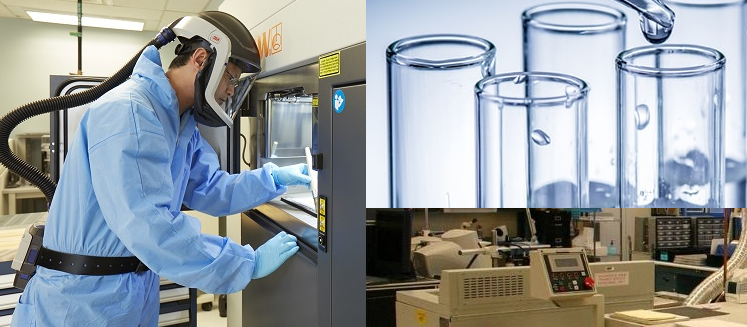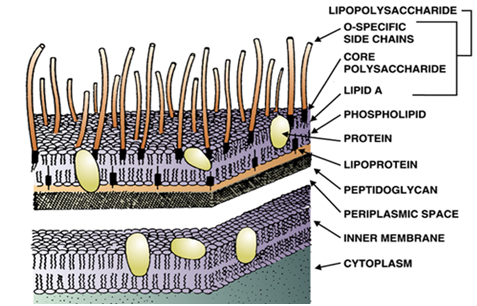Good manufacturing practice (GMP) is simply defined as those general rules that govern the manufacture and/or production of a safe, efficacious and microbial-free pharmaceutical product. GMP are practices and the systems required to be adapted in pharmaceutical manufacturing, quality control, and quality system covering the manufacture and testing of pharmaceuticals or drugs including active pharmaceutical ingredients, diagnostics, foods, pharmaceutical products, and medical devices.
While quality control (QC) is the part of GMP that is concerned with sampling, specification and testing quality assurance (QA) is that part of GMP concerned with organization, documentation and release of products without errors. In addition, QA is that part of GMP that encompasses all aspects that impact the overall quality of a (finished) product.
GMPs are guidance that outlines the aspects of production and testing that can impact the quality of a product so that the finished product is deemed fit for consumption and free from microbial or chemical contamination. Many countries have legislated that pharmaceutical and medical device companies must follow GMP procedures, and have created their own GMP guidelines that correspond with their legislation; and the main objectives of the GMP practices is to safeguard the health of the patient.
GMP practices also ensure that good quality medicine or medical devices and active pharmaceutical products are always produced by these companies. Drugs and pharmaceuticals manufactured in conditions which violate the good manufacturing guidelines are said to be adulterated. Thus, compliance with the GMP is a mandatory aspect in all pharmaceutical manufacturing processes. GMP provides guidelines to the manufacturer (in a pharmaceutical manufacturing company for instance) on how efficient to control any form of contamination that may arise during the course of production.
Several sources of contamination including contamination from raw materials and water are some critical areas where contamination during manufacturing of a pharmaceutical product can arise. Apart from the contamination from raw materials and water, contamination during production can also arise from the air supply, packaging materials, and storage of the already finished goods/products. Contamination from personnel’s, manufacturing premises and the manufacturing equipment and/or instruments are other major sources of contamination that abound in a pharmaceutical manufacturing plant.
And it is critical that the pharmaceutical microbiologists and/or the quality control/assurance personnel’s takes note of these important contamination sources so that sustainable measures could be established to contain their untoward effects on the production process or finished goods. Proper documentation and recordings of all the procedures or proceedings of the manufacturing company is another aspect of the good manufacturing practice that production companies must abide to. Such ledger or records must keep accurate and detailed information as to the quality and effectiveness of the manufactured products; and this must be done in details and in a well-controlled manner for inspection by the GMP personnel’s.
There are several bodies or organizations that oversee and ensure that pharmaceutical company and other companies involved in the business of producing food/medicines meant for human consumption comply strictly to lay down laws or guidelines that allow them to perform their job at the minimal risk there is.
The Food and Drug Administration (FDA) of the United States of America is one of such organization saddled with the responsibility of ensuring that pharmaceutical industries and/or food industries comply with the principles of GMP in the U.S. Other countries also have their own regulatory agents that ensure the safety and efficaciousness of medicines or foods produced locally; and these organizations ensure that these manufactured products are safe for human consumption and free form all sore of contamination that may cause infection or death of the users.
The National Agency for Food and Drug Administration and Control (NAFDAC) is Nigeria’s own agency that regulates the activities of companies involved in the production of food, drugsand other products consumed by the Nigerian populace. Other regulatory agencies in other countries are Medicines and Healthcare products Regulatory Agency (MHRA) in UK; Korea Food and Drug Administration (KFDA) in Republic of Korea (South Korea); Therapeutical Goods Administration (TGA) in Australia; Medicines Control Council (MCC) in South Africa; and Agência Nacional de Vigilância Sanitária (National Health Surveillance Agency Brazil) (ANVISA) in Brazil.
Those empowered by the law pay regular or time-bound visits to these food and drug manufacturing companies to ascertain their level of compliance to the GMP regulations. Regulatory agencies (including the FDA in the U.S. and regulatory agencies in other nations) are authorized by law to conduct unannounced or scheduled inspections to manufacturing industries in order to ensure their compliance to GMP practices. Pharmaceutical/food manufacturing companies that fail to meet the expectations of the GMP regulations (as it is unique to each country or region) risk the possibility of having their company shutdown, sealed or bound from any further production.
Thus it is critical that manufacturing companies update themselves with the changing guidelines of the GMP of their country to ensure compliance to these regulations in other to stay in business. It is noteworthy to mention that when the principles of GMP are not strictly adhered to by manufacturers of food or drugs, everyone including the consumers and the producers becomes affected in one way or the other. The manufacturer experiences great economic loss due to low patronage of their product by consumers; and this is usually attributable to several issues especially to the low effectiveness of the product or the microbial or non-microbial contamination of the product.
In other cases, the GMP regulators or the government agency saddled with the responsibility of ensuring quality of manufactured goods may clampdown on such companies and have their plants partially or permanently sealed. Once production ceases, employee’s losses their jobs, profits drops and the company may go bankrupt. The consumer may on the other hand become sick simply by using a contaminated pharmaceutical product or food product. Serious health challenges usually ensue when the consumed product is contaminated with infectious agents such as Salmonella species, Pseudomonas species, Escherichia coli and Klebsiella species.
This causes morbidity and mortality in human population coupled to the economic loss involved in the treatment of the affected individuals. A disease outbreak may occur when such contaminated product is consumed or used by a sizeable number of the population. Pharmaceutical products or preparations are easily contaminated before and after manufacturing if good manufacturing practices are not imbibed during production. Since there are several sources of contamination of pharmaceutical preparations, it is therefore vital that every manufacturing process in a pharmaceutical company are carried out in manners that will help to keep microorganisms at bay – even though it is almost impossible to rule out contaminating microbes from the production process.
References
Arora D.R (2004). Quality assurance in microbiology. Indian J Med Microbiol, 22:81-86.
Ashutosh Kar (2008). Pharmaceutical Microbiology, 1st edition. New Age International Publishers: New Delhi, India.
Axelsen P.H (2002). Essentials of antimicrobial pharmacology. Humana Press, Totowa, New Jersey, USA. Al-Jasser A.M (2006). Extended – Spectrum Beta – Lactamases (ESBLs): A Global Problem. Kuwait Medical Journal, 38(3):171-185.
Bisht R., Katiyar A., Singh R and Mittal P (2009). Antibiotic Resistance – A Global Issue of Concern. Asian Journal of Pharmaceutical and Clinical Research, 2 (2):34-39.
Block S.S (2001). Disinfection, sterilization and preservation. 5th edition. Lippincott Williams & Wilkins, Philadelphia and London.
Cars O and Nordberg P (2005). Antibiotic resistance: The faceless threat. International Journal of Risk & Safety in Medicine, 17 (3/4): 103-110.
Carson C.F., Hammer K.A and Riley T.V (2006). Malaleuca alternifolia (Tea Tree) oil: A Review of Antimicrobial and other Medicinal Properties. Clinical Microbiology Review, 19(1):50-62.
Cowan M.M (1999). Plant products as antimicrobial agents. Clinical Microbiology Reviews., 564-582.
Denyer S.P., Hodges N.A and Gorman S.P (2004). Pharmaceutical Microbiology. 7th ed. Blackwell Publishing Company, USA.
Nally J.D (Ed.) (2007). Good manufacturing practices for pharmaceuticals. Sixth edition. Informa Healthcare USA, Inc, New York.
Discover more from Microbiology Class
Subscribe to get the latest posts sent to your email.





